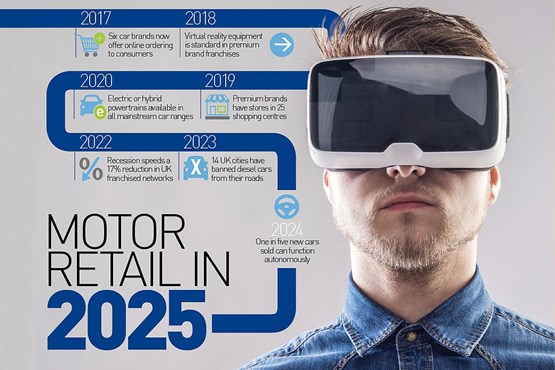
By Tim Rose and Tom Sharpe
It is nearing the end of 2025 and the UK is recovering from a recent recession.
More than 20 franchised dealer groups each record annual turnover of more than £1 billion and the top few are £5bn+ turnover businesses. The combined AM100 accounts for almost 60% of the UK’s franchised networks, after a sustained period of acquisitions. Beneath the AM100’s turnover threshold sits a hardcore of retailers, specialists in just a couple of brands and operating seven or eight dealerships across a region. Owner-operated dealerships are few and far between.
This scenario may or may not be close to the truth when we reach the middle of the next decade, depending on what the future brings, Brexit or not. Whatever happens, motor retail will have changed.
Industry experts agree that three undeniable trends are likely to continue: The UK has suffered a recession in every decade since the 1950s, carmakers are rationalising their franchise representation, and the consumer is gaining power and choice.
Martin Wilson, managing director at MTBN, believes the support motor retail received in the 2008 recession will not be so deep next time around.
“The initial impact of scrappage, reduced VAT and low interest rates, combined with the historic VAT repayments on demonstrators, have resulted in the retail motor industry prospering, enabling some of the less efficient dealers to survive.
“It seems inevitable that at some point in the next nine years a recession will hit the motor sector and there will be a further reshaping of the franchised dealer networks”
Martin Wilson, MTBN
“After several successful years, it seems inevitable that at some point in the next nine years a recession will hit the motor sector and there will be a further reshaping of the franchised dealer networks.
“Already manufacturers have all been reducing the number of partners they have, in some cases to relatively small numbers. That’s a gradual trend and the bigger brands are moving into line and adopting the same sort of policies.”
Even without a recession, Wilson sees the exit of smaller dealers continuing, as they realise their best return by selling their property for alternative use.
2025 could be “a tipping point” in how consumers regard their mobility, said Jay Nagley, managing director of automotive consultancy Redspy, and dealer group boards need to be considering how they can embrace the opportunities.
“People might sign up to integrated mobility solutions, where they have equal access to occasional use of taxis, trains and a car. In that case, we might well see the beginnings of a move away from car retailers and the rise of car operators,” he said.
“There will be mobility providers in the same way as there are mobile phone providers. The question is whether the large dealer groups will get on board early and move into these lines of business.”
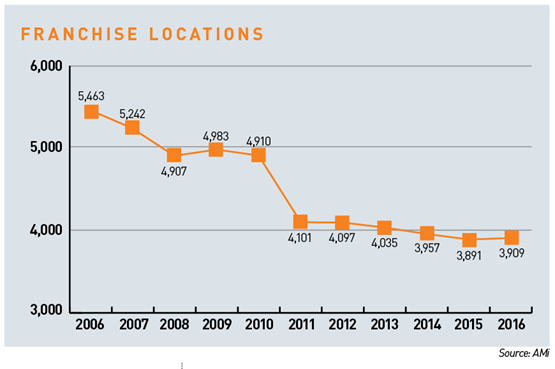 His view was echoed by Paul Gordon, managing director of marketing company Autotorq. Gordon said: “It’s a mentality question. A time will come when dealer groups will have to ask themselves what business they’re in, selling cars or providing mobility.”
His view was echoed by Paul Gordon, managing director of marketing company Autotorq. Gordon said: “It’s a mentality question. A time will come when dealer groups will have to ask themselves what business they’re in, selling cars or providing mobility.”
Nagley warned smaller dealer groups that they will need to be “powerful and influential” to survive a shift towards market consolidation as the new model is implemented.
ASE Global chairman Mike Jones said the days of a successful dealer principal in a group heading off to start their own single dealership are diminishing, given the investment required. He sees motor retail in 2025 being further consolidated, with the AM100 dealer groups becoming more dominant and several more operators coming under overseas ownership.
However, Jones said dealer consolidation will continue at a managed level, as the carmakers will want to ensure they are not over-reliant on just a few retailers.
 Steve Young, managing director of the ICDP, which studies car distribution, said UK dealer groups have a broader brand portfolio than those in mainland Europe, and are looking for scale with their brands, having five or 10 dealerships rather than the odd one or two.
Steve Young, managing director of the ICDP, which studies car distribution, said UK dealer groups have a broader brand portfolio than those in mainland Europe, and are looking for scale with their brands, having five or 10 dealerships rather than the odd one or two.
“It’s only when you’re handling that sort of volume that you earn a seat at the table with the manufacturer directly, and you get some group synergies across that brand,” he added.
Network structure
Industry commentators agree the market area principle – whereby a franchisee operates multiple locations for a brand across a specific area – is likely to be more prevalent by 2025. Sales points in the smallest towns may be sacrificed, shrinking the network to consolidate sales volume into larger showrooms, as manufacturer standards require central ‘showpiece’ dealerships, which they believe show their brand in the best light.
J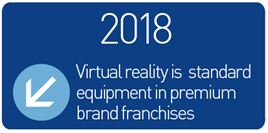 ones said greater sales throughput per site will be a requirement, ensuring dealers can improve their profitability. However, he believes where that profitability comes from will evolve, as it will still be managed by the brand.
ones said greater sales throughput per site will be a requirement, ensuring dealers can improve their profitability. However, he believes where that profitability comes from will evolve, as it will still be managed by the brand.
Wilson said: “To a degree, all manufacturers like the market area principle. Through the economies of scale with three or four dealerships covering a big patch, it’s far easier to make money than it is with just one dealership.”
Young believes car brands will need to be represented in non-dealership locations, such as stores and pop-ups at shopping malls and transportation hubs. In this way, the brand gets on the consumer’s consideration list by the time they start doing their online research. The ICDP would argue that these ‘micro-locations’ will be part of the dealers’ remit, because they need to run over extended opening hours and a dealer in its own market area has a broader labour pool on which to draw.
Young also pointed out that if a carmaker has fewer traditional dealer locations, particularly the glitzier, high-investment ones, then it will need standalone service points or some other means of providing servicing. He said this fits with the market area concept, with flagship showrooms, standalone small service points and fixed and temporary micro-locations.
 “That provides real scale and will make better returns,” he said.
“That provides real scale and will make better returns,” he said.
Young said no brand is saying it will do a massive restructure of the network, but the ICDP believes there will be attrition. In fact, the ICDP thinks some reduction in main dealer networks is necessary, more than the manufacturers will admit, he said, as their plans don’t stand up to new technologies and consumer behaviour.
Direct online sales?
Manufacturers selling directly to the consumer may work for niche models and special editions, but the industry expects little appetite for mainstream direct sales by 2025. The current model supports manufacturers’ cashflow and vanity in allowing them to register a sale once the car is off-loaded to a dealer, and limits the manufacturers’ own investments in retail infrastructure.
The connected car and service contracts mean the carmaker will have more direct contact with the customer, but the ICDP believes any online sales channels would still be fulfilled through the dealer networks.
“If you don’t, all you do is make the dealer network weaker, and in the end the manufacturer has to somehow fund that by either terminating and paying compensation or putting more into campaigns and incentives to give the dealers a chance of making modest margin,” said Young.
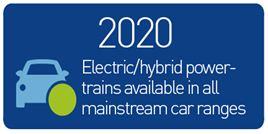 Jones agreed: “If they want to protect the dealer networks and maintain profitability of the dealer, if they’re not going to allow them to sell new cars, they’ll need to replace it with something else, such as increased bonuses.” He believes most sales will go through the dealer networks for the next decade, but further ahead there could be significant change.
Jones agreed: “If they want to protect the dealer networks and maintain profitability of the dealer, if they’re not going to allow them to sell new cars, they’ll need to replace it with something else, such as increased bonuses.” He believes most sales will go through the dealer networks for the next decade, but further ahead there could be significant change.
“Historically, the motor trade hasn’t moved that fast over 10 years,” he added.
Jones believes that as long as the dealers continue to provide a valuable service to the customer’s journey, their position in the chain is secure. However, he warned dealers that they need to keep the consumer in mind.
“Dealers and many other businesses spent many years wishing the internet would go away, and to a certain extent some of them are still doing that, with the fuss around Carwow, etc. But if the consumers want this as a piece in the value chain, you’re going to be stuck with it, because it’s filling a need that you don’t.”
Young said the UK customer today doesn’t know what they want, but does have frustrations. Generations have been brought up thinking the way you buy a car is from a dealer, in many cases with not a great experience.
“If the manufacturers and dealers don’t come together to provide an experience comparable to that when the consumer is buying other products, then someone else will step into that gap and find a way to do it.”
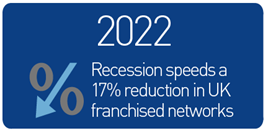 The ICDP believes manufacturers and dealers must look at ways to collaborate in the customer’s interest.
The ICDP believes manufacturers and dealers must look at ways to collaborate in the customer’s interest.
“The balance of power needs to move to the customer. They have great choice now, and if the manufacturers and dealers continue squabbling with each other then the customers will go to a digital channel and get access to a car in a different way,” Young said.
That is already happening elsewhere. Consumers are using Truecar and Dealer.com in the USA, and Autohome and Bitauto in China. They have a relationship with the car brand and the online brand, but not the dealer.
Carmakers need to give deep thought to how internet sales may work, Young said, to avoid a race to the bottom, where dealers are effectively outbidding each other.
He also believes the omni-channel environment makes it not tenable that the person who finally signs the contract gets the whole margin. So he predicts the dealer’s earnings will include a ‘fee for service’, which rewards them for the stages they are involved in.
Changing brands
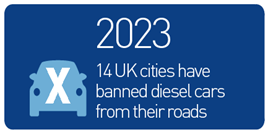 New brands are unlikely to be established in the UK by 2025. One reason is the mature market here, dominated by established manufacturers that have consumer trust and appeal. Infiniti and Lexus continue to struggle compared with the major German premium brands, and it has taken years for Hyundai and Kia to gain any ground on the mainstream market.
New brands are unlikely to be established in the UK by 2025. One reason is the mature market here, dominated by established manufacturers that have consumer trust and appeal. Infiniti and Lexus continue to struggle compared with the major German premium brands, and it has taken years for Hyundai and Kia to gain any ground on the mainstream market.
What is almost certain, however, is that some of the carmakers selling new cars here today won’t be doing so in the UK in 2025. None of our industry experts would name names, but the last 10 years have already shown that me-too brands such as Saab, Chrysler and Chevrolet could not keep up.
And further ahead?
Jones said 10 to 20 years out there is potential of significant change. He said while futurologists have said consumers don’t need the “palaces” manufacturers demand, “inertia” means dealerships are getting bigger: “It’s going to take a brave brand to change that, but you never know. Over the course of the next 20 years somebody might revolutionise that, so they operate from much smaller retail stores with an abundance of technology, and then handle test drives and servicing locally.”
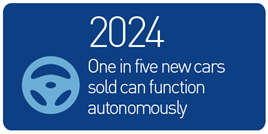 He said it will be interesting to see if the zero-commission, zero-targets model trialled by Hyundai Rockar will be pervasive in 20 years.
He said it will be interesting to see if the zero-commission, zero-targets model trialled by Hyundai Rockar will be pervasive in 20 years.
“There will be a question mark over whether we need all the large facilities currently being built, or whether retailing will have changed – if we’re using more technology to present the vehicle so we don’t need everything sitting in showrooms.”
Young believes there are difficult-to-access places where an individual owner-operator may still operate in five or 10 years’ time. “But will the small dealers still be there in 20 years’ time? I don’t know. I don’t believe you’ll find them in and around the major population centres.”














Login to comment
Comments
No comments have been made yet.